Maragoli, Kisii, Suba, Nyore/Abanyore, and Kuria(Vatende) settlers to the shores of Lake Nyanza (Winum Gulf) are the descendants of possibly the earliest groups to have arrived in Kenya. The Sarikwa-Tachoni and Maasai communities acknowledge these with names, adoption of smelting, and food. These five are the principal clans of many other lost and bigger tribes that introduced iron smelting, Pottery, Sorghum, Millet, Bhang(kinasori or inasori), Busa(tradition brew) sesame oil(Bhene/Vene), wood carving, and the use of iron tools in the entire East Africa and Great Lakes region. Sorghum, millet, and bhene(sim-sim) came from North East Africa together with wearing of skin(Masero) and Brass arm bracelets or round earrings(Maragoli-Men).
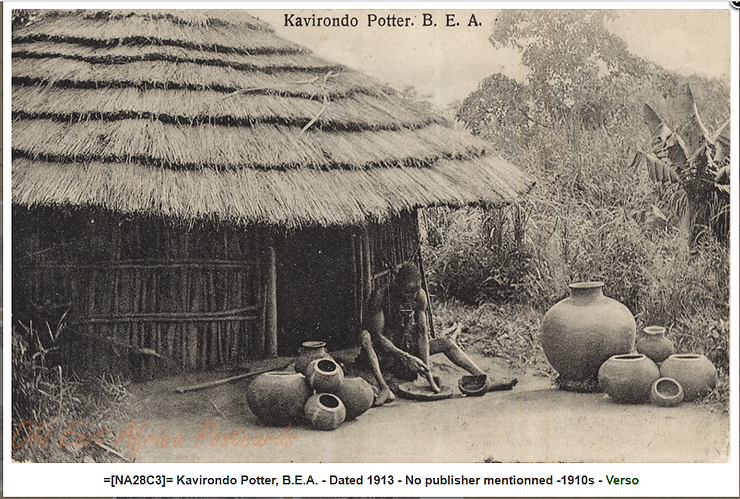
-
By:
- David Kedode
- No comment
- Tags: Bantu, Luhya, Maragoli, Priests, The Lost Tribe of Dan
Maragoli Lost Story-The Priest
By Agisha
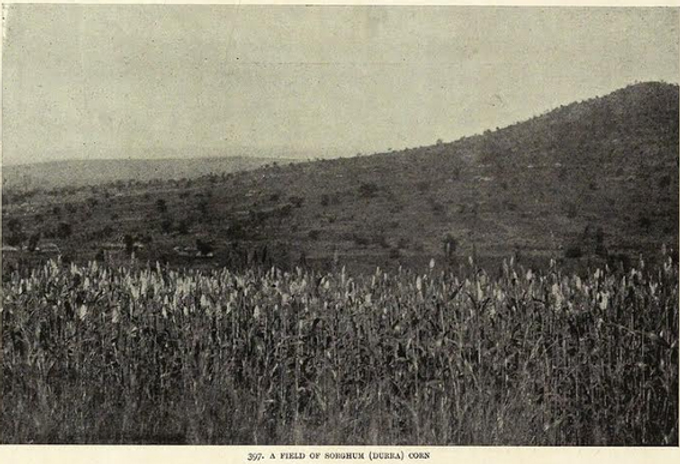
There are certain common Bantu names, found in East Africa that have a deeper meaning and signified either titles, totem, or what clans did best. example of such names are; “Abang’ali” “Baruli” “Muturi” “Avaruli” “Muluri” or ”Muiruri/Muiluri” these are Iron-smelting names then “Mavele” is sorghum, “Kirima” stem from the royal house of Abakirima in ancient Axum who were custodians of seeds, they were targeted for slavery and many of them ended up as Sindi’s of India. Shikanda is found all over Luhya land and they are very strong and ruthless people, then in Maragoli we have Amasingira which means; “defenders” or “leaders” and the “Avatembuli” who are traders and are known for establishing markets all over they went, they’re respected for trade, in Isukha they’re known as “Avarimbuli.” Kimani, Ambani associated with “Imana” the peacemakers. “Ng’anga” or “Abang’ang’a, Tomia, Marama, Mulama are associated with authority.
Maragoli the immigrants are descendants of the five sons of Murogoli namely;
1. Kilima
2. Kizungu
3 Musaali
4. Maavi(Gonda the last-born priest)
These four sons intermarried with locals who have always been in the Great Lakes and the intermarriages increased the clans and therefore population, Maragoli’s intermarried a lot with the Saniaki-Tachoni, Datooga, Maasai, Terik-Nyango’ri and in ancient times with Luo’s and produced the 32 clans.
Murogoli with his original clansmen was a nomadic immigrant from Uganda, known for roaming Shirazi, Mara region then Arushia (Arusha) for a while, then Serengeti, and finally Vihiga. Vihiga is the only place where Maragoli’s remained settled over a longer period. There are strong connections between Maragoli and ancient Chwezi, and I’ll try my best to prove that, first the name “Kitara” and its power structures are something that by default eliminates Luo and Tutsi from Kitara’s Kingdom because if Luo and Tutsi were Chwezi, then their own Nilotic words and Cushitic names would remain imprint in Uganda but no they’re not.
The Bunyoro-Kitara Kingdom Mirrored other Bantu kingdoms, especially Zimbabwe and the Laongo Kingdom in Kongo. Surprisingly it is Luo with Tutsis who adopted Bantu titles and culture and not the other way round, if you check Sudan or the Horn of Africa where these two came from, there is no scientific, cultural, or religious way Luo and Tutsi could introduce what is lacking in their homeland, but a character already found all over Bantu’s Kingdoms. Even further south of Bunyoro, the same structure was there. So yes! We will find that it is true Luo and Tutsi ruled and enslaved Bantus, but very late, and was after they undermined and “grabbed” an already existing kingdom with the help of Turkic-Arab slave merchants on their side until Europeans arrived and also took their turns on mincing Bantu. Surprisingly it’s the Bantus of Buganda who attracted the trading attention of Swahili Arabs settled in the shore of Mombasa.
Historically Buganda and Ashanti Kingdoms emerged exactly in the same period, and that was exactly when the last known relatives of King David disappeared from Axum! could this be the reason for God’s “Nyambe” for Akan, Zambezi people, Zimbabwe and Barotse-Luyana? The current Jesuit historian in charge of world history and education says that Turk-Arabs and their slaver soldiers didn’t know anything about Luyah-Kavirondo at all, but that’s a lie.
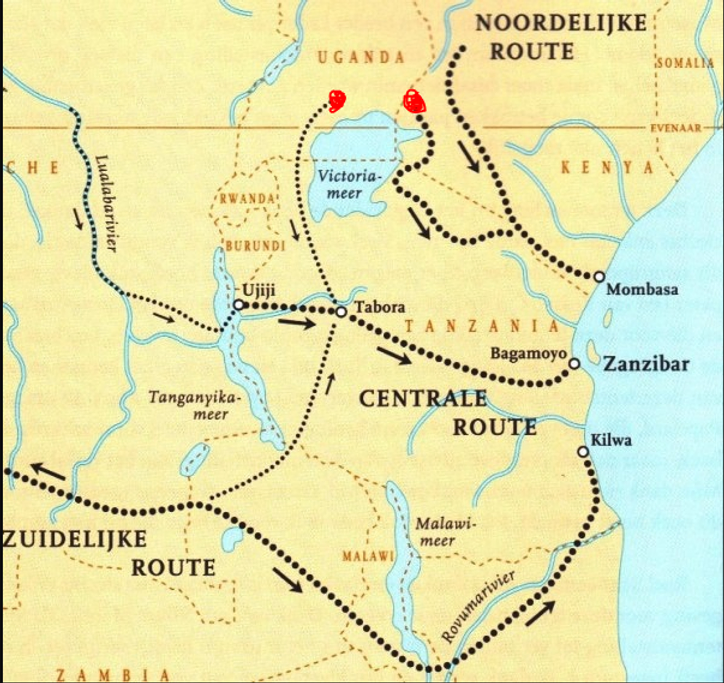
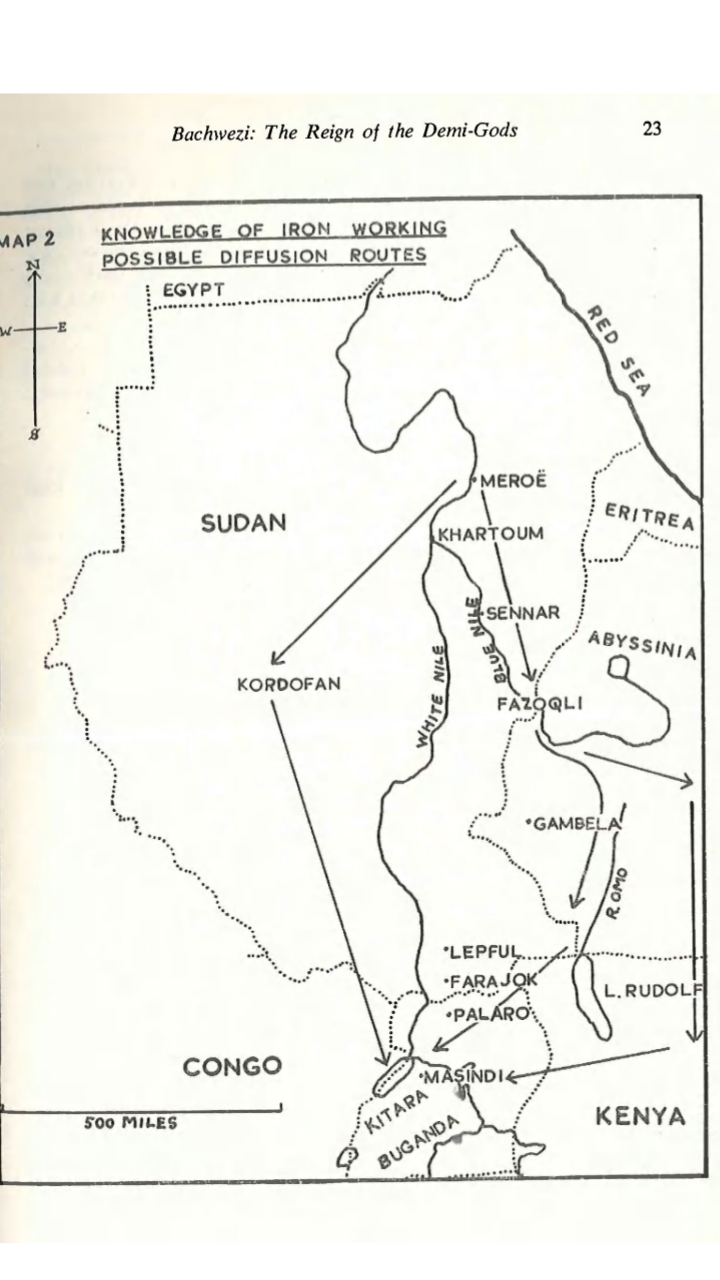
The period between 1300 and 1850 saw huge migration of Bantu clans and families from Uganda into western Kenya then further south to Northwest Tanzania. Between 1902 and 1978 the emergence of the present-day Abaluyah, Abagusii, Abasuba, and Abakuria communities, these movements were mainly because of Luo-Babito countless invasions on Bantu and finally overthrowing them from the Bunyoro-Kitara Kingdom’s and other lost kingdoms of Buganda. The formation of the Abaluyia entailed the fusion of the pre-1400 inhabitants of the western province with those Bantu-Nilotics groups that arrived in the region in the 16th century and 18th centuries from Eastern Buganda which is still within Ugandan territories. While the union of Bantu-Nilotic-Sarikwa who lived to the north of Lake Victoria was politically lumped into a single community (the Abaluyia) the Bantu to the south of Winam Gulf evolved into three distinct societies the Abagusii, Abakuria, and Abasuba with Abasuba being completely absorbed into Luo tribe.
The lumping up of modern Luyah by the British Geographical Society was finalized by the late President Jomo Kenyatta, who fully collaborated with Colonial powers to carve a new country called “Kenya.” The entire process was done maliciously, in total disregard of Bantu’s-Sarikwa-Nilote’s own interest, integrations, marriages, clans, and origin. The whole population was made one by forcing all into one basket. Everyone was lumped together under a different colonial structure that would forever end Bantu’s autonomy and self-rule for close to 61 years today(2024) since King Nabongo and other Bantu kings were overthrown by Britons and their map, nation, and territories redrawn.
To avoid a power vacuum, the ancient Nilotics were systematically installed into the newly created powerful government positions by Britons. Cattle herders and militiamen were also recruited into the Kenya Armies, Kenya police forces, and Park Reserves to protect European Ranches and imperial interest in Kenya and when cattle herders objected, they went directly to Sudan and hired Sudanese(Nubians) for militia service. The forces were ONLY recruited from mainly the same majority Nilotic while the British own; “Bantu’s army conscripts” who did very well in Burma World War were removed or retired from service because they were not stupid enough as was required. The herders-Armies were transformed into guarding these new colonial structures that abducted Luhya’s powerful Kingdom and made them who they are today “SERVANTS OF EUROPEAN LANDS AND THEIR BANKING SYSTEM.”


Luo’s and Swahili Arabs played key roles in dislodging and deleting of Kavirondo Kingdom. That’s not all, the defeat and the massacre of Afro-Shirazi Arabs in Zanzibar-Pemba by John Okello and Karume who like Idi Amin were recruited by British agents to overthrow any rivals of Britons and thereafter the installation of pro-Briton stooges. Then the Chetambe war and the overthrow of the Buganda Kingdoms, Marachi(an insulting word by Luo), after Luhyas defeated the Luo in a war called “Ng’ono,” when Sirikwa was the Omwami of Marachi who fought Luo expansionist and slavery of Bantu, last of the wars, was Kisii’s Kano-Yimbo war when Bantu’s were ambushed by Luo’s and swept out from Thimlich Ohinga, these led Luo’s into grabbing Nyanza and pushed several Bantu’s into new settlements, the Kisii and Kuria found themselves on the edge of everything, sandwiched on mountains and plains between Maasai’s, Kipsigis and Nandi who also took turns in fighting them. The word ” Ohinga” is derived from Bantu’s “Vihiga” which is the same word as “stones” the Maragoli priest used and still uses for rituals.
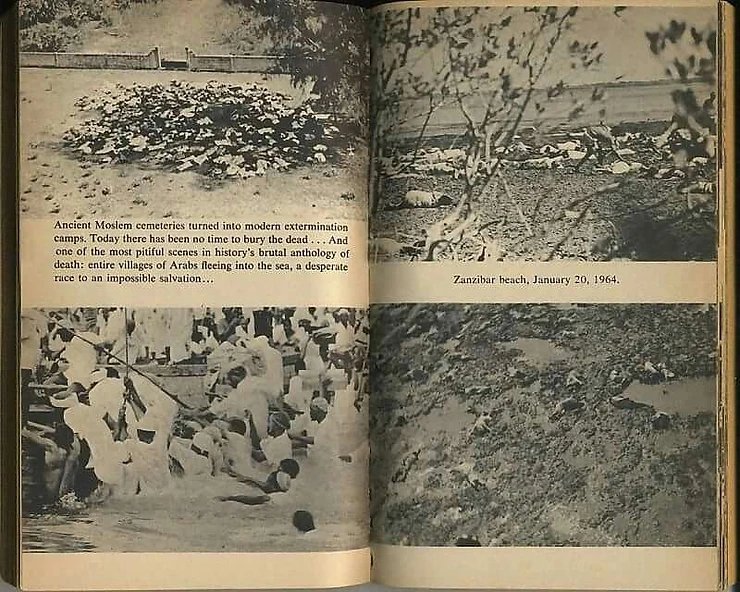
For a job well done, rewards were the immediate promotion of the late Jaramogi Odinga as the new kingpin of Kavirondo, Karume was given Pemba and Zanzibar, Obote from the Langi-Luo tribe like Okello in Uganda together with the then little known the late Jomo Kenyatta as the new king of stolen territories of Buganda and stolen territories of Somali-Land. The Afro-Shirazi were a peaceful Black Arabs from Shirazi-which is South West-Iran who never indulge whatsoever in slavery of Bantu because they were also Bantu’s, some of these Afro-Shirazi clans are found today in Bunyore as Bashiratsi,others are in Comoros, Mozambique,Seychelles,Pemba,Tanzania, Zanzibar, Mombasa,Malindi,Lamu, South Africa by different names but because of color one might not easily tell that they’re Afro-Arabs, that was the main reason why Britons didn’t want them in the first place because their presence in East Africa seriously interfered with Jesuits and Victorian-era chronology of N.W.O history as we all know it today, these is why Kilwa is in ruins today because such a powerful civilization will make intelligent people doubt Jesuit chronology of history and Bleek’s or Seligman theory of Bantu migration, a theory that was cooked and served in Nyanza(Great Lakes) by Luo’s and Tutsi’s, they coined it by claiming they’re the only “Hamatics” from north and the rest came from West Africa, the rest meaning “Bantu.” Some people say that the “Umma party” of Afro-Shirazi had something to do with the Ummayad others say it was just a name for their struggle and movement after the great Massacre by Okello.
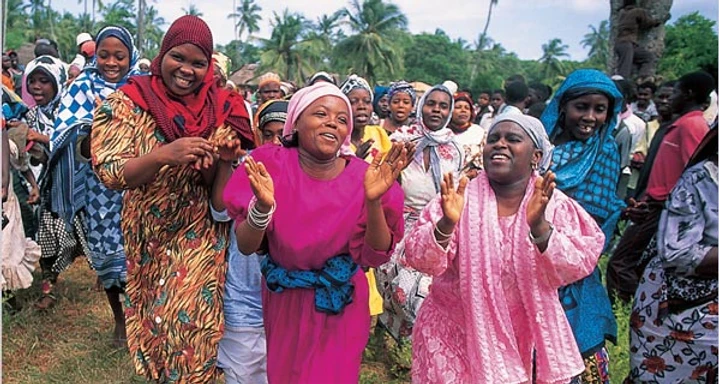
Before all these things were done, Swahili Arabs or the “Caravan potter boys” were made to go around Kavirondo declaring “SERIKALI MPYA NA UTAWALA MPYA” meaning ‘new government is in place.”
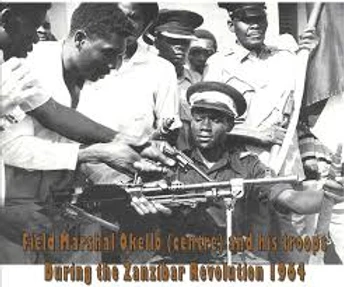
Before the late Jomo Kenyatta was installed as the new president of Kenya by Jaramogi and Britons, he made a pivotal trip to Europe, that was sometime between 1929 and 1930 in Edinburgh-Scotland, the whole trip was made necessary by the Rockefeller(Bankers and secret society) so that Jomo could school the Royal family on what he knew about Kavirondo and the famous word “Muraguli,” a famous title that was all over Bantu’s in Nyanza. later on, they wrote a book for him(Facing Mt Kenya) to play circus with Kenyans. his meetings were disguised as an “FGM” meeting and the dates of the event changed to 1960, but the truth is like a smoke, you can not hide it forever!
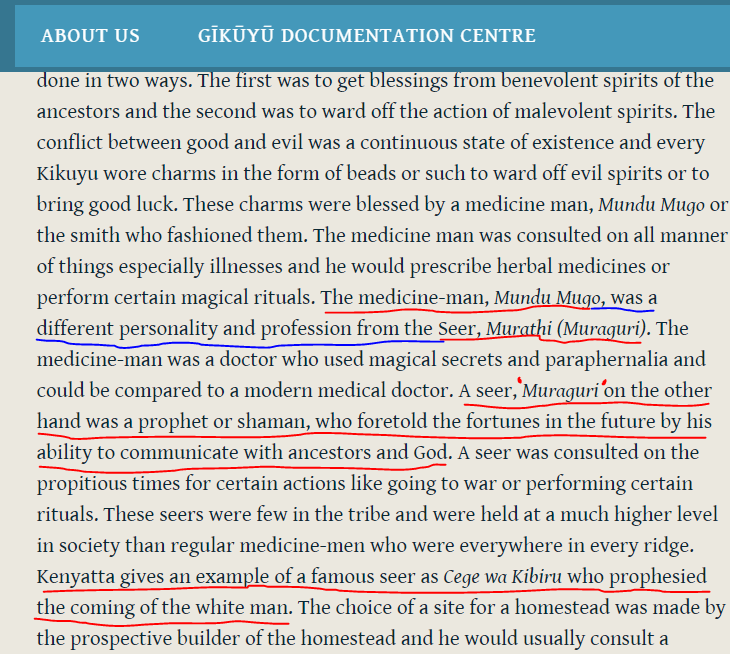
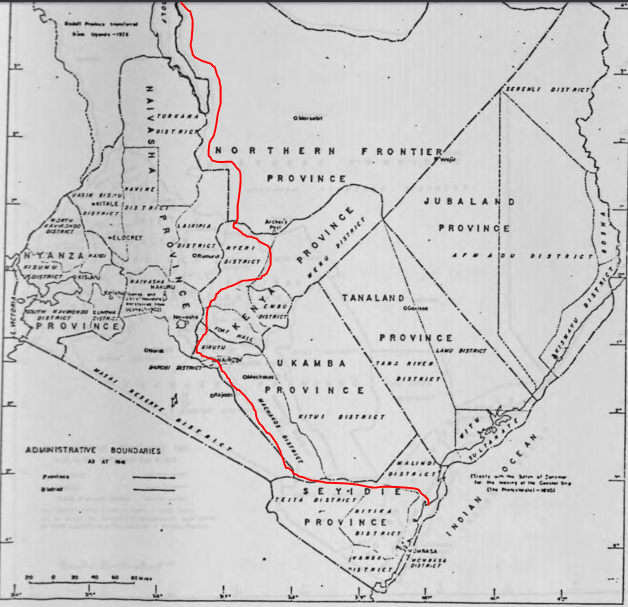
LUO’S SUPREMACIST
The Nilotic Luo from Bhar el Ghazal Sudan expanded from Uganda which was the epicenter of cultural supremacists. it was the ugliest encounter of the Luo against the Bantus, the whole time by way of displacements, local slavery, and finally, Babito-Luo’s grabbing the Bunyoro Kingdom from the Bantus for themselves alone.
The biggest enmity was that the Babito-Luo is from a FEUDAL type of “rulership” with no experience whatsoever of ruling a “KINGDOM” styled type of government. They disrespected the Bantus by completely toppling and displacing them from Bunyoro-Kitara with their feudal war-like characters and made Kitara the Immoral hub, although they kept the original titles and order of Bantu like Leopard skin(Ingoi), drums(Isingoma), food, and power structure. The Kingdom went down under the new Babito-Feudal kings who destroyed the Bunyoro Royal-ship up to its final demise, that was because they ruled without considering the prophetic aspect that originally made Kitara a unique powerful government of Bantu.
As the two moved on, the aggressive interactions between them persisted right into their new settlements in the region. These communities continued to interact extensively in modern western Kenya but quietly concealed their historical injustices. Each group has a distinct history that should be detailed because as these people interacted with each other they did it as smaller entities, for instance as “clans” and with their immediate neighbors. It was occasional that several clans combined to fight against Bantu and especially numerous times certain clans ganged up against Maragoli, Wanga, and Kabras, the three who experienced the most frequent raids from the aggressive Nilotes. Historically, Maragoli was repeatedly attacked because they kept on offering cow sacrifices every weekend, and that provoked the larger Nilotic families who treated cows as Royalty, a sign of wealth or gods(API).
Surprisingly, Nilotics tribes used weapons obtained from Bantu iron smelters to raid and attack the same Bantu! these continued long until boundaries were dug out by the British colonial government, all to separate Nilotic war-warriors from Bantu-Agriculturalist, examples of these boundaries are; “The Masana border, Kaimosi border, Wanga Border and finally Samia/Busia border.” These boundaries came lasting peace but Maragoli lost land and several of their own Bantu clans that had adopted the Luo language and preferred to be identified as Luo and not Maragoli anymore, these continued over some time and clans were absorbed and became Luo speakers in Luo-and, example “Masero'” which are Maragoli’s and many others, but the process was not voluntarily it was to camouflage and submit under the warlike Luo’s. Before the British era, there were no Luhya-land or Luo-Land, the two mixed a lot but the Luo mistreated and harassed Luhya continuously, so there were a lot of clan fights especially over women, because Luo didn’t have taboos(Migiru) about someone’s wife and they preferred Bantu’s women more than their own, this was especially on Sweta, Masero and Nyore women who were lighter skin, humble, respectful and well endowed than their original taller-slim Luo.
So when Britons and even Germans in Tanzania arrived they found the two in chaos, so quickly Luo and Luhyas were “physically” separated from mixing or living among each other by the British government. Consequently, out of these new boundaries came the creations of the Luo-Nyanza region and Luhya of western Kenya region, For identification Britons called these new segments; “Central, south and Northern Kavirondo” and then the southernmost region alone was removed from Kavirondo’s and renamed “Nyanza” to differentiate Nilotic Luo’s from Bantu-Luhya’s, but in Vihiga remained a good size of Luo’s who had nothing to do with what the Armies of Petero Obiero and Siaya militia under the command of C.B Hobley and D.C Hermment did to Bantu’s, but because of pain and sufferings, these peaceful Luo’s were kicked out from Vihiga, these were retaliation attacks from Maragoli’s who felt seriously violated and rendered landless in an overcrowded and tiny “Vihiga.”
By 1924 Maragoli had a population doubled the size of the entire Luhya, after the 1934 British out-migration policy from Vihiga, still, Maragoli were double the size of Bukusu by far, so Maragoli retaliated against the Luo who lived in the southernmost of Vihiga and sent them packing to Kisumu, Wanga too did the same in their areas, Samia too did the same Itakho armies swept Bunyore clean and made sure no Luo remained on their territories.
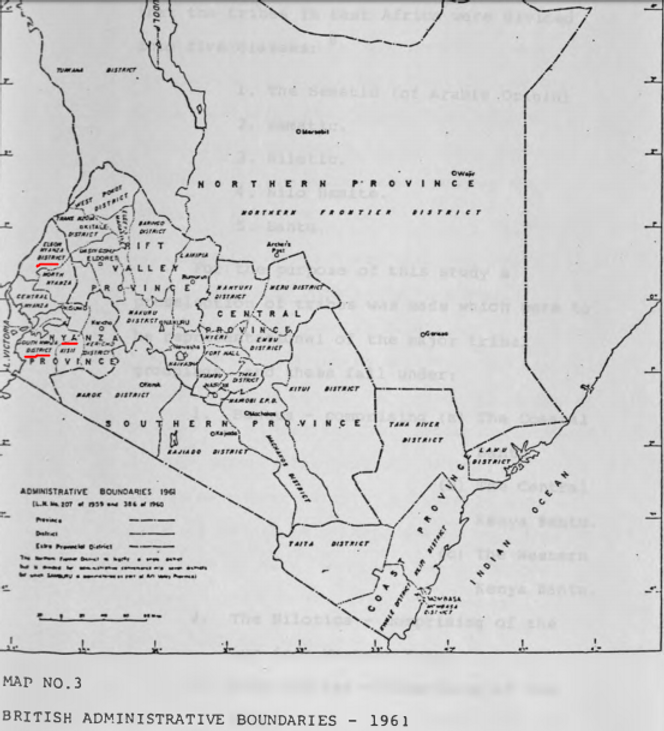

MARAGOLI’S HISTORY
According to the founding fathers of the Maragoli community, they taught that; Murogoli the son of Andimi, is the father of all Maragoli and was a descendant from an ancient priestly clan known as “Musalisi,” The word “Musalisi” itself can be broken down into two parts “MUSA-LISI” to mean a Seer, priest, a praying person, herbalist or a Prophet. In ancient Israel there were chosen prophets but less mentioned were the powerful Seers, an example of a great Seer was “Amos,” Then there was Gad, but Samuel was the Greatest Seer of them all.
The Most High loved King David so much because he obeyed his commands, David had a Seer called Samuel, and Samuel the Seer taught David everything he did since he was anointed as the King of Israel and Judah Tribe.
Seers were more like a fortunetellers but not from the prophet ancestry, in most time they appeared sporadically from any tribe and not the Levites genealogy( (1 Samuel 9:9,11,18,19; 2 Samuel 15:27; 1 Chronicles 9:22, Isaiah 30:10,Amos 7:12-13, 2 Samuel 24:11; 2 Kings 17:13; 1 Chronicles 21:9; 25:5; 29:29, etc.) In the Bible, the first herbal priest was Noah(Jubilees 10:12) because Adam failed to honor Genesis 2:15, then after the exodus, the Levites took charge of herbs until the final exile. according to the Torah, the Levites were the keepers of laws, the ark of the covenant, and especially on clean and unclean laws which Rabbis in modern Israel call “physician laws” (Ezekiel 22:26; 44:23; Haggai 2:11-13) also Exodus 30:7. Moses was also was a physician by default (Bronze snake that healed people Numbers 21:6-9).

Maragoli have a lot of; “don’t do it” called “Migiru” and this is the lifestyle of Maragoli that very few people know about Maragoli’s. Murogoli blessed his youngest son Musaali(Gonda) with divine powers to stop pandemics, remove curses, offer forgiveness sacrifice to Nyasayeh, offer sacrifices for land fertility and men fertility, cast out evil sacrifices, offer war sacrifices(entrails ritual like Beta Israel) and during sacrificial days all Maragoli were required to stop everything. not even touch food until the sacrifice event is done, very late in the evening and the last quill meat has been subdivided across and eaten by everyone. the quill meat marked the end of the ritual and many others of Mugiru’s laws. On the quills meat for Maragoli’s, it’s surprisingly found in the bible during the Exodus(Exodus 16:13)

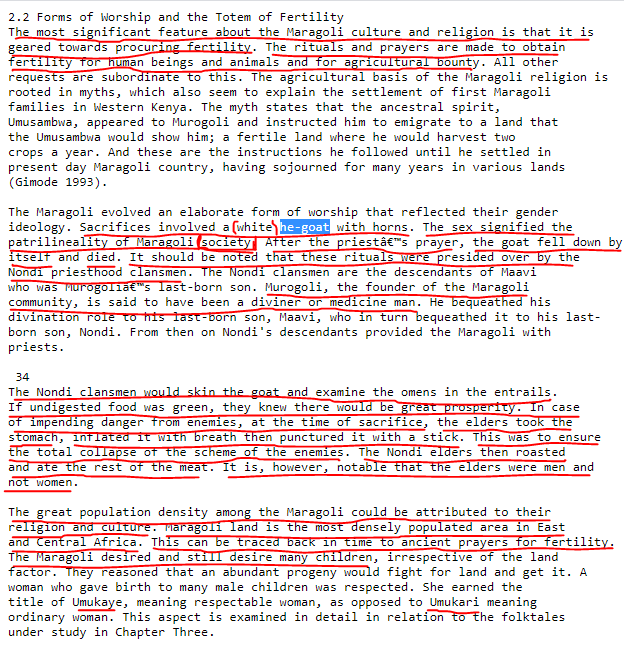
According to Maragoli’s Migiru’s traditions and culture, Maragoli’s society was not supposed to be ruled whatsoever by a non-Maragoli. Rangoli were strictly forbidden from participating in major politics or directly being involved in the government politics of a non-Maragoli, the laws of Maragoli required indirect supervision of all Maragoli clans through a head-man(doors) who in turn were governed by the two priests: the lesser priest, and the highest priest (Musalisi Munene), all Maragoli men were required to inherit and marry the wife of your brother in case he dies. 40 days after the burials, the whole family had to do Luvego(Shaving), seven days after burial they did ceremonies to remove the shade from his house, circumcision was only done on the Riverbanks for blood to mix with water and soil which match perfectly with Biblical Circumcision at Gilgal (Joshua 5:2-15) The Bible explains that physical circumcision is a type of spiritual circumcision “of the heart” (Deuteronomy 30:6; Romans 2:29). In literal circumcision, there is a rending of a veil of flesh and shedding of blood that is reminiscent of sacrifices.
Going against any of the migiru laws had severe consequences which in many times was mental insanity, pandemics, infertility, or even death. To be reversed chicken sacrifices had to be offered(like Beta Israel) in Maragoli every ritual is preceded by chicken(Ingokho) and Ovwali itself has the same characteristics; “chicken-chicken-chicken and other occasion bull. but all these mugiru laws were attacked by Quakers and they no longer exist in action but only by theory and old stories, in-fact Maragoli who converted to Christianity don’t entertain mentioning of these Migiru laws, but anyone who has visited, researched, studied, or interacted with Beta Israel or other Jews know Maragoli were performing archaic Hebrew customs that perfectly matched that of Beta Israel today including housing building rooftop rituals, even some Kikuyu have some little of these rituals and they perform them at Mt Kenya, but Maragoli have more others Migiru and these explain the name “Maragoli.”

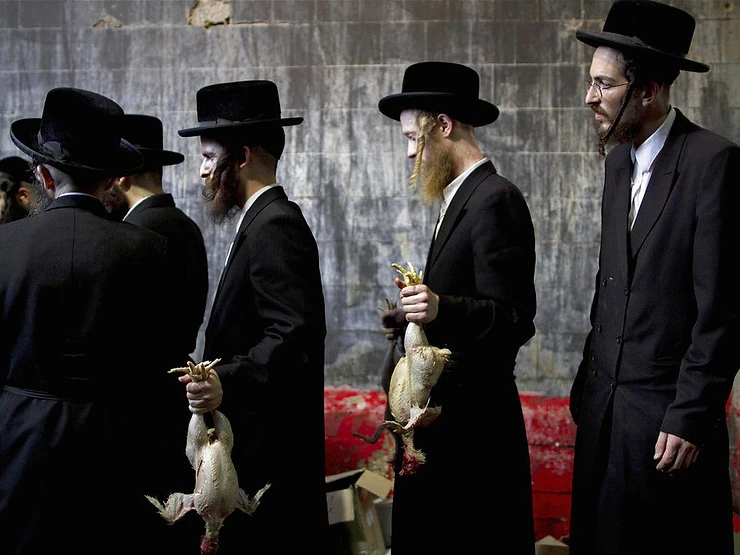
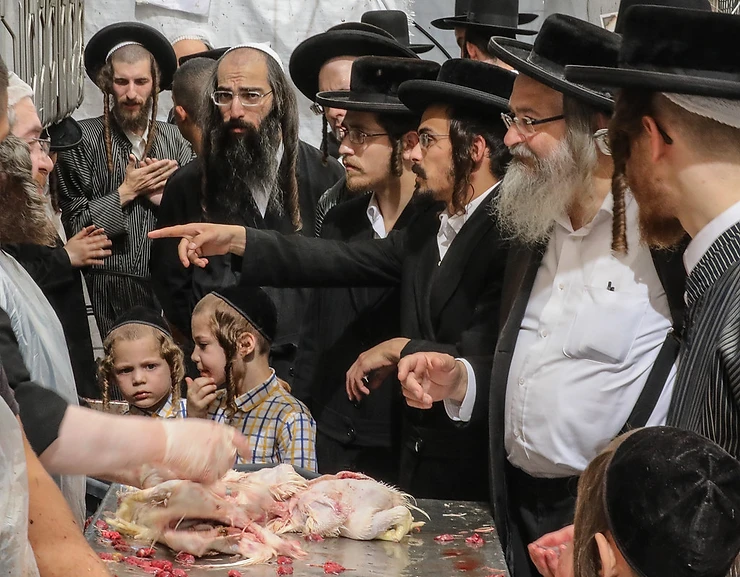

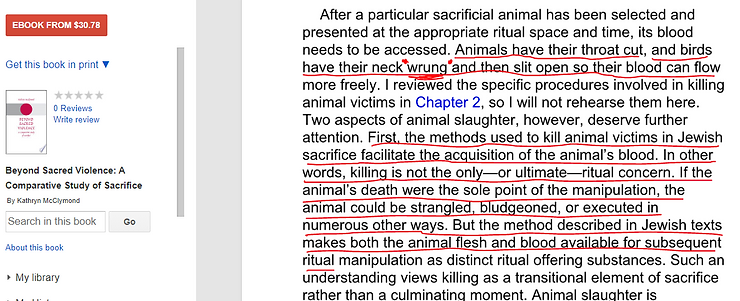
Long before colonization and a series of boundaries were effected, Maragoli were known as “the stateless society of Maragoli/Ragol”(Evans Pritchard 1940), an interesting phenomenon that made the late Ole-Ntimama very rich during his reigns as a powerful government minister of KANU and later on in Kibaki’s government, The late Ole Ntimama was the sole representative of Maragoli’s stateless society at the United Nation and he spoke on behalf of Maragoli without our blessing or permission. Maragoli society earned their living primarily through their prophetic ministry, farming, and Barter trade, they named and ruled the Great Lakes on a different platform, not as government or Kings but as lead priest clans of the ancient Kitara alongside Bantu Kings.
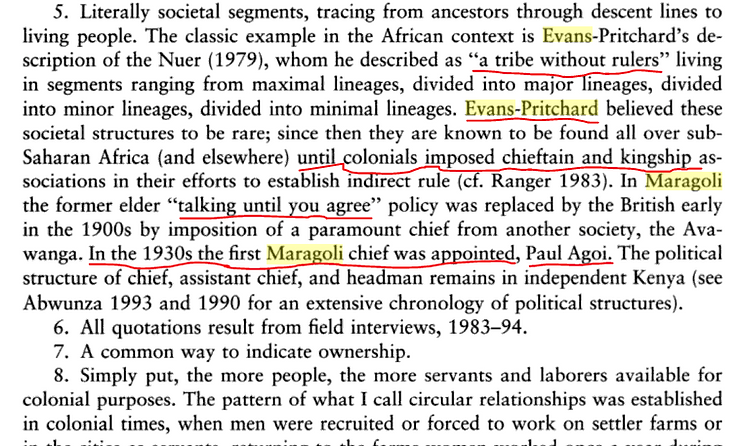
It is well documented that Kushitic-Ankole(Hima chain of groups) ruled and enslaved Bantus in a chain of Kingdoms that in most cases was feudal, Maragoli too were regarded in similar status but as diviners and not enslavers as of the Hima groups. Maragoli were seers or priests and ruled as such, these attributes were known throughout even by Swahili Arabs(John Speke’s book about Malindi) and other archaeologists before the colonial structure was affected and deletion of Maragoli history began, this is what I have dedicated my time to reveal, so buckle up and get yourself ready for declassification of Maragoli’s true history. The Turkic/Ottoman’s “Alkebulan” upside-down maps of Africa has some good history, in their map Maragoli “priests of hills and mountains” were known as “Mulago” and on their maps, a huge red star signified area of great importance to the Turkik-Ottoman-Arabs.

Migratory movements
Luhya historian(Were) records that the ancestors of Maragoli left the Buganda-Bunyoro Kingdom in early 1600s, then went to hide in Rusinga Island at the Thimlich Ohinga and again were assaulted and pushed northwards by Marauding Luo. Also the word “Mbita” is Maragoli and it means ‘passage.’ Finally, they moved to Vihiga in around 1740(circumcision record), and ever since then there are perceptions among several fellow Luhya clans who still believe Maragoli are Luo or Maragoli are not fully Luhya but some “converted Luhya,” but indeed we’re Luhya, Mr Were also gathered evidence that “Omwa,” “Ndahura,” “Wamara” and “Muhindira” were part of the forefathers of Maragoli, this “Omwa-Muhindira” is credited as the first “Omwami’ of Munyanza, meaning Royalty of Bunyoro-Kitara and the lost kingdoms before the invasion of Luo-Babito finally besieged and devastated Bunyoro, the evidence of Muhindira or Wamara is in the names themselves which are Maragoli, this words are found all over Toro and Buganda and taught as the principle ancestors(Mrooli and Kintu) who established Bachwezi dynasties. 30% of Luganda sound very closer to Maragoli, but differ in meanings.
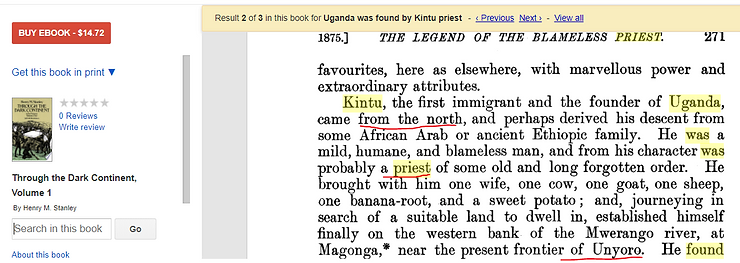
According to Simioni Jumba (The custodian and original author of Mulogoli History and Family), the ancestors of the Maragoli originally lived in North Eastern Arabia at a place known as “Akusuma,” which in Maragoli means “trading port or hub” and it’s the same word that later on became to be Kisumu(Akusuma) commercial hub.
In Arabic; it’s “Aqasumah” in Gee’z and in Amharic; “Axuma.”

When their ancestors migrated from Arabia in big numbers, they traveled up to a big sea, and then crossed it into Misri and lived there for a while. that was long before they left and settled in numerous other places, one of their settlement was in the city of Shikanda(Renamed Alexandria by Greeks) and Kahera in Egypt(renamed El-Cairo by Arabs), then Kurru(Harero tribe Mukuru), before moving to Olwa, Nabibia, Karima and finally to another place they named Akusuma-Gonda(Ethiopia and last born son Gonda of Murogoli) where they lived for many many years. here they were recognized as accomplished in barter trading, making the most wanted gigantic potteries(Kedera/Visyongo), earthenware, iron-smith, hot-pepper, Gold mining, Vihinda from reeds, soap making from special herbs, weed, detection of wells for water, woodcarving, Skin hives(Masero), Busa-Beer making, Quails, ceramics, Making musical drums or stamp from Mutembe tree, grains(Sorghum and Millet), extraction of bitter herbs(sennar tree-Sudan), extensive use of Mugumu tree, making of blue beads and sesame oil(Vhene/Bene).
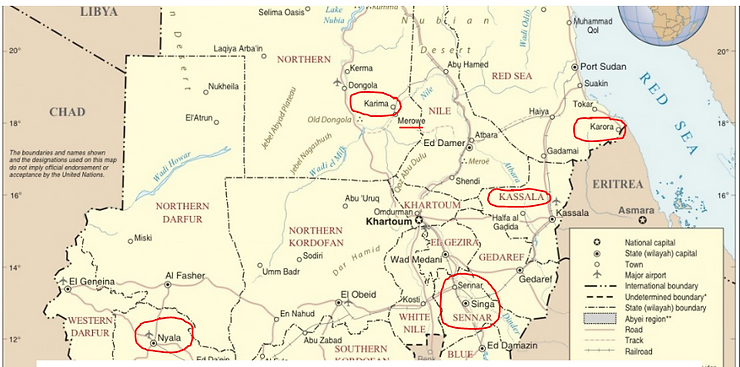
Then after a while, they relocated to Sudan-Kasala(The word Kasala in Logoli means two things; “place of prayer”(Kusala) and trade under the shed of shorter trees market, then Jumba mentioned “Soba” a lot, he said that the forefathers mentioned Soba as their most peaceful settlement ever and Karima where they grew millet and sorghum. Then suddenly they were ambushed and chased away. On several dhows, they followed the Nile River(Kagera) on a southward direction, and as soon as they reached the Southern end of Ethiopia they settled at Turkana(Lokitang-Kalokoli) with Karamajong and named a place they settled “Ragol,” and “LokiTang” from “Kwa-Katanga”(which means we have started in Logoli) that was near Lake Turkwel, again the ancestors of Maragoli lived for many years, gave birth to new babies, grew old and died in Lokitang before shifting again westwards to Bunyoro where they were known as part of “Isingoma” or “Murooli” which are Bantu titles that meant “seers” or priests, these titles were eventually stolen by Luo’s self-installed Kings whom Luyah called “Banyoro,” meaning “the uncircumcised pastoral herders,” take note; “Banyoro is a different word from Bunyoro and Bonyore.”
while still in Buganda the forefathers of Maragoli grew their usual grains, continued farming, made pottery, and had the unusual character of putting their shorthorn cattle inside their house or huts, a very odd culture from other people around, the same custom is still found in Maragoli’s together with “Misonge” rooftop of Maragoli which is a stand out from all other Bantu’s.

According to Jumba, Maragoli emigrated from Saudi Arabia because there was an abrupt emergency of a new breed of people in Arabia, completely different from peaceful Arabs, these new people began to capture specifically Maragoli and sell them in markets; and also used to hunt and eat Maragolis, in short, they were cannibals, the forefathers of Maragoli knew these new weird people as “Mbukinya” which means “mermaids.”
The forefathers and lineage of Maragoli through Andimi migrated as far away as they could get from the North of Africa to start over a new life and find a peaceful settlement far from the cannibals. From Bunyoro they used the Western Uganda route into Lake Nyanza, they crossed Lake Nyanza (Victoria) and went deep into Rusinga Island(Rusinga means place of bath in Logoli) then Eastwards to Mara and Back to Seme(Seme means quarrels in Logoli) and there they established new settlements and naming their land. But during the colonial era, they left Seme, Bondo, Senge(Aunt) Uriri(puff adder or cry), Suna(Mosquitoes, a divine place for prayers or Tsetse flies), Yimbo(West-Kissi original land), Alego, Migori and moved up to Maseno(originally It was called Masana which is the same word as Shona), then they took refuge at Mt Maragoli hills and finally Vihiga. This was between 1740 to 1902.
Between 1902 and 1906, the last group was kicked out of Kisumu regions by Luo during the Masana war under chief Petero Obiero, and then finally Britons took over Kisumu. The Abanyole and Tiriki moved into Bunyore a few months ahead of Maragoli, and the AbaMang’ali chief clan of Nyore (Iron smelters) continuously resisted the settlement of Maragoli’s in Vihiga because of land scarcity. Raids from armed Mang’ali continued until Maragoli retaliated back and conquered Banyore(the 6.6-foot-tall giant Mwana wa Mandu) war and defeat, most Luhya clans opposed Maragoli’s settlement in Vihiga except Itakho. Bukusu to this day still believes Maragoli are Luo’s.
CHWEZI PRIESTS
Europeans still insist that they are the builders of Kitara through their own “white mixed immigrants, who migrated from ancient caucasian-Egypt to Sub-saharan Africa of the Negros.” These Black-white Caucasians are what Germanic Eugenics called “Hamitic” or “Swartz,(Chwezi)” and because Luo’s and Hima fully collaborated in formulating these theories, the two became descendants of these ancient “Black-white Hamitic from North” who civilized what the two called “Shenzi-Bantu” and intermarriages is what turned the two into Negroid(Black) after repeatedly marrying Black women. just like Europeans lied about the Great walls of Zimbabwe by claiming the walls were also built by “White-Hamatic from North,” today we confidently know Kitara was established by Bantu.
The truth of the matter is that it was built by priestly prophets known by Baganda and Abatwa(Pygmies) as “Kintu” and originally these priests came from the North and left plenty of evidence behind. Tutsi/Bahima/Ankole and others who took the “Hamatic theory” as an accessory to steal Kitara’s legacy also know Kitara/Bunyoro was originally found by a priestly family from the North who repeatedly offered ANIMAL SACRIFICES on hills and performed great miracles under SACRED TREES while holding a cross sign which Tutsi and Luo called “Witchcraft” or “Pagan” to this day because they have nothing to do with the priestly Kitara.
Tutsis and Luos don’t have their word for King(Mwami) and God, although Hima retained “Imana” which is equivalent to “Amun” God of Peace in ancient Egypt and Luo of Kenya still worship the God of Maragoli’s “Nyasayeh” while the Luo tribe in Uganda known as Jopadhola borrowed from Bukusu’s-Luhya “Were,” The major Luo tribes in Uganda (Acholi and Lango) and Congo (Alur) call God “Jok” while the Sudanese Luo, the Dinka’s name for God is “Chieng” which means “SUN” but in the real sense it’s not directly the sun-worship but the “ILLUMINATION” OR “ENLIGHTENMENT,” Maragoli justify the divine right to Nyasayeh by the word for prayer (verb: Khusayah; noun: Lisayoh (singular) or Amasayoh (plural) and Maragoli deity; Asahi, Asai or Isayah(Wagner Gunther’s Book Titled Bantu of Kavirondo). While the Luo word for prayer is “lamo” which is still a Maragoli word that means ‘curse.’
Most of the Biblical and Khemit God or gods came directly from the Great Lakes, for example, “ASIS” of Kalenjins is no different from “Osis” of ancient Egypt, “El” of Tachoni is the same Elohim, and that’s why we had Tachoni seers and prophets of “El-doret” ‘El-kwony” “Mt EL-gon” etc.
A deeply hidden secret on the exact cause for the Migration of Bahima herders and Luo-pastoral states is that it began immediately after the Makuria-Turks war in Dangole Sudan, migration itself began when unfortunately the Shiluk armies were defeated by the Turks and forced to retreat to Southern Sudan, Turks were hunting for Nubian and the Makurian, The Makurians were in a real sense the Hebrews (Quraysh/Kuraiza, Kwainuka, Kusii) whom Greeks later on called “Christians” from stolen Meroe script that called them; “Kurios” and “Kristo” came out of their names.
So Bahima and Luo’s followed behind these priestly clans down to Kitara, the reason being these Prophetic priests drifted away with Rains, the further south these priests moved the hot and dry North-East Africa became, killing most of the Royal Bankole Api cattle in between Ethiopia to Mali and the wider Sahel belt, it’s a known fact that at some point it used to be greener in Southern-West of Yemen and Green Sahel belt, but suddenly things changed that even forced Hijira of Arabs, the thousands of dark skin Shirazi Arabs of Iran and Oman to migrate down to East African Coastline Azania(Mombasa-Pemba-Malindi-Zanzibar-Sofala) around 640-890AD.
The British government and even the stooge government of Kenya recognize the Vihiga district as the wettest area in Kenya. on an annual average Vihiga receives more rainfall than any other place in Kenya and most parts of the African continent, this is why the KANU government had to build a meteorological office in Vihiga because Britons wanted to analyze the power of Abanyore in influencing rains and thunderstorms which Britons are still observing and analyzing to this day.


SOCIAL AND ECONOMY
Maragoli’s community survived by Barter trade and farming, which’s why there are so many trading posts around the Great Lakes region that still bare the names of Maragoli, for example Hamisi, Sabatia, Majengo, Chavakali, Mbale of Uganda Entebbe (Indeve-Seat) and Mbale of Vihiga also there is a Mbare market in Zimbabwe by Shona-Kalanga-Lemba community.
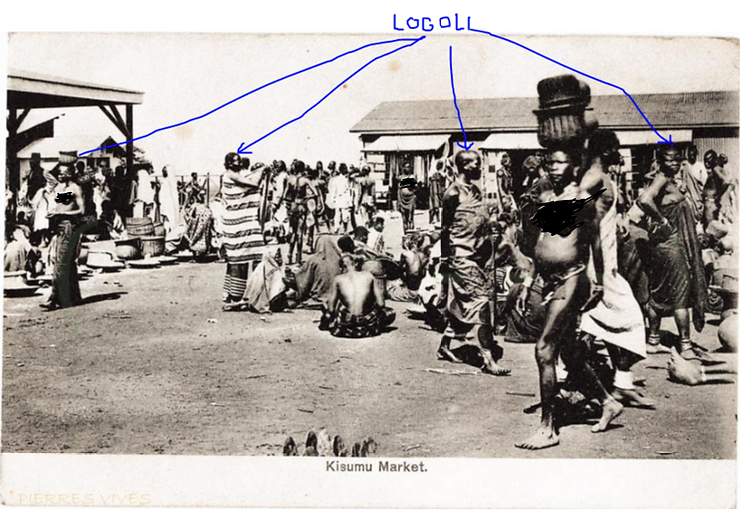
Kisumu Market was originally founded and established by Maragoli (Munubi) which Wagner Gunter was able to capture and document in his volume one “Bantu of North Kavirondo,” although it was an open market(Manyatta). Wagner was also able to establish the word “AKUSUMA” in Logoli meant “trading post,” the elders of Maragoli told him how they initiated and started several other markets on community borders that even brought together foes and rivals like Nandi’s and Luo’s who were sworn enemies! but Logoli’s middleman would separate the two sides in open markets and both sides enjoyed exchanging goods with each other on Wednesdays and weekends then share Busaa at the end.
Trading and busaa drinking somehow contributed in fostering peace among different societies, although history has it, that Luo’s traders would never quit market after exchanging their own stuff until they are chased out or else they will stay put and instigate war by demanding return of their exchanged commodities, although Maragoli history has it that Luo’s were very apt traders especially in cows and learning how to recreate stuff they have acquired by barter trade, few days later they will bring their re-engineered back and of the highest quality on the next market day.
Maragoli like the forefathers still led in adopting and speaking different market-languages just like the forefathers did and attracted the attention of everyone to Akusuma with them, in terms of adopting languages Maragoli can only be compared to the Multilingual Kambas because an average Maragoli can speak fluent Nandi, Kikuyu, Dhaluo plus other Luhya languages while majority of other Luhya won’t easily speak or even understand Maragoli except for Itakho. that’s not all, Logoli are very social, peacemakers, humble, and can easily integrate with everyone and maybe that’s how they succeeded in establishing trading markets. when Tutsi dropped their Kushitic Language, they adopted names and words that are a mixture of Logoli, Banyoro, and Laganda, for example, “Kagame=Kigame.”

Tribal names that we all use today for the purpose of classification, were majority branded on us as a result of neighborings own perceptions about our culture, behavioral attitude, or how they thought about us, example the name “MARAGOLI” is not a Bantu word, the root is “RAGOL” which originally is from far away in Armenia, its a translation from ancient Assyrian and Arabic to mean “Priestly man” it’s the same word that Kikuyu use for a seer “Muraguli” example their own Mugo wa Kabiru Prophetess during the late Jomo Kenyatta reigns, Among Nilotes, especially Luo, Turkana and even Karamajong the word is still “Ragol” to mean a fortune teller, seer or a prophet, among Kisii “Moraguli” is a seer, and in their own culture, Moragoli(Usually a woman), is a seer who tracks, stopped witches and removed curses.
Among Ameru, they also had a Muraguli which has a similar meaning as for Kikuyu, Isukha and Luhya in general also have the same word “Muraguli” for the same thing, these “Muraguli” name was all over East Africa and the entire Great Lakes, but as more people accepted Christianity, Lack of satanic word rendered “Maragoli” as the evil word, so everyone including Maragoli themselves were taught for a record 34 years by Quakers church to believe “Maragoli” is synonymous with evil. The ancestral enemies of Maragoli took turns attacking Maragoli, subsequently the true history of Maragoli became obscurity to this day and we know the Quakers church took 34 years to delete everything they found in Vihiga, including building “Christian lines” and evict non-believers from “Village lines” and giving clothes and money to those who accepted Christianity.
Outside Maragoli, in places like Rabai, Timutimu, and all other places, missionaries camped for less than 10 years combined, this is because Rockefeller knew if you conquered Maragoli you would have conquered the entire Bantu’s Great Lakes and he could get his ‘USURY’ or banking industry rocking. Yes! there were bad and good things about missionaries, good thing that Quakers brought education and civilization for free, but on the bad side, they DELIBERATELY deleted everything and stole the Lugomba drum from the shrine, those who know what that big drum with protruding handles meant and the power that it had!
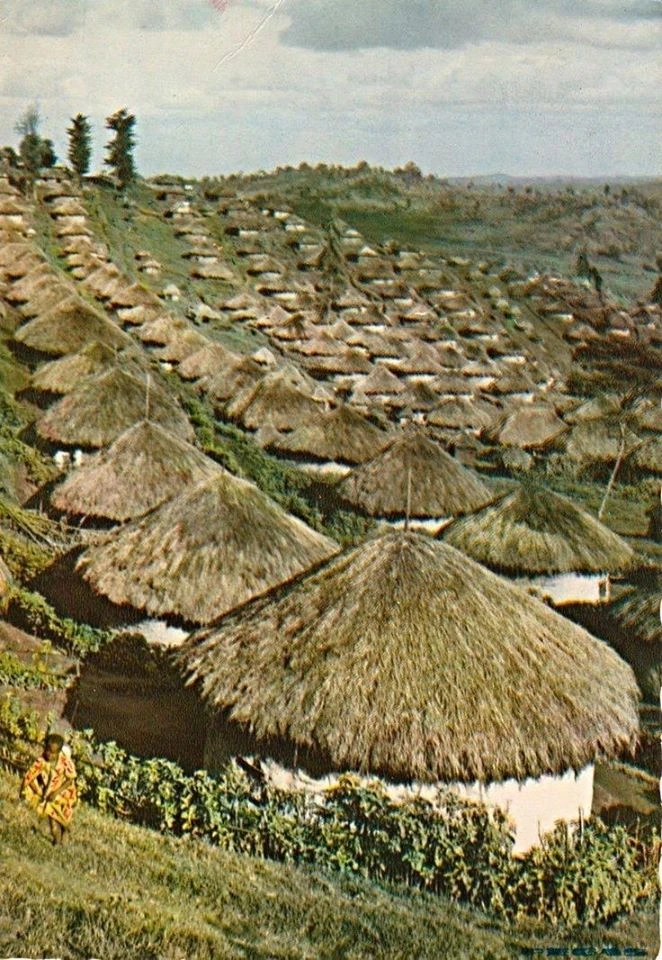
Another important point about names is how Nilotes who took over Kitara got their names, example the word “Babito” comes directly from Logoli “Vavitu”(John Speke book) which means “our people” then “Banyoro” means those who do not circumcise, “Kitara” is derived from “Amatara” which means “our village” or our world Kidara or Amadara. Then the name of Tutsis like “Bahima/Muhima” means “Hunters of people” and “Ba-Ankole” means “What can you do?” or to dare someone! So as one can tell, the interaction between Kushitic-Tutsi, Nilotic-Luo, and say Maragoli’s Bantu left a dreadful history, we know Luo call all Luhya “Jamwa”(insult) and Tutsi call all Bantu “Shenzi/Zenj” or “Bahiru/Abahiru/Bairu.” which means ‘slaves.”
“Lumbwa” for Kalenjins or Kamrasia means “to be pushed” which I don’t understand why Luhya used that word, “Avatwa” means cut or pierced earlobes for Sarikwa(Ndorobos) and highland Nilotes. Kavirondo is not a designation for Luo, or as scholars have lied for many years, but means Bantu, also Kavirondo doesn’t mean “kaa-virondo” that’s a lie and cover-up by Luo themselves and the British government who deployed such tactics to try and create peace and cover our rumps. Example: “Kaffiri” or “Kaffiri-Zulu” means “Non-believers” of Islam in South African Zulu, the word “Kavirondo” is derived from “Kaffiri-Rondo.” Meaning Bantu from Ganda that resisted Islam, it was like calling us “Pagans.”
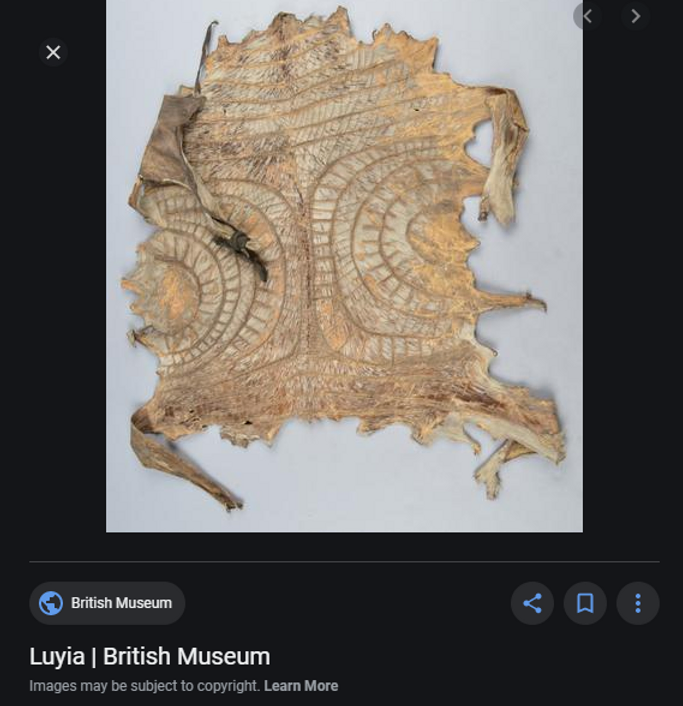
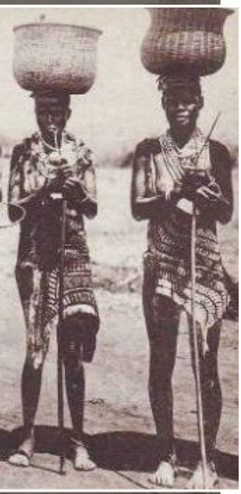

The last one is “Maasai,” the name Maasai comes directly from Maragoli’s; “Amaasai,” the Amasai is not their original name, Maasai was a nickname for drinking blood. It’s believed there was a heavy interaction between Maragoli and Maasai that brought forth names such as; “Maasai-Mara” then “Serengeti” from Maragoli’s word “Ku-Serengeta” which means going down a hill, “Arusha” is from Maragoli’s “Arushia” which means ‘northerners.’ Then “Uasin-Gishu” which is derived from ‘Mkwasi-Ngishu” and “Manyatta” from a place of holding and selling cows “Kunyatta.” Also, the wife of Murogoli was a Maasai(Kaliyesa) and that’s why Nondi priestly clansmen look so different and by DNA Maragoli will have some percentage of Maasai ancestry although by maternal side only.
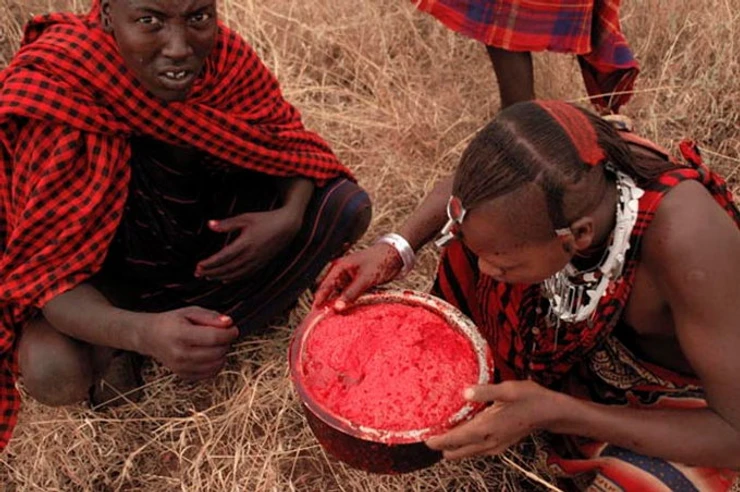
Religion
Very little has been said about the traditional religion of Maragoli’s, Long before Maragoli were regimentally converted into Christianity by Quakers Church(Emory and Rees family), for a record period of 34 years, two times longer than time spent converting both Kikuyu(Timutimu) and Luo combined, beginning from when port Florence of Ugandan Railway was finalized, Quakers missionaries began in 1902 to 1942(second World war) when Wagner Gunter was sent by the Rockefellers and British government to investigate the priest of Maragoli and if the Quakers had archived main goal of converting Maragoli into Christianity. Wagner’s main objective in which he was trained and paid for, was to write a book that would depict Maragoli as witches. However, it’s well documented that Maragoli had a religion and was acknowledged throughout the Great Lakes region including by Arabs in Mombasa and deep in Eastern Congo. Maragoli knew one “Nyasayeh” and called prayers “Kusayah or Kusali” or “Masayoh.” The deity of Maragoli; “Asahi” or Isahi” equals what the Coptic’s stole from Axum with the exact word “Asahi” for Ase.
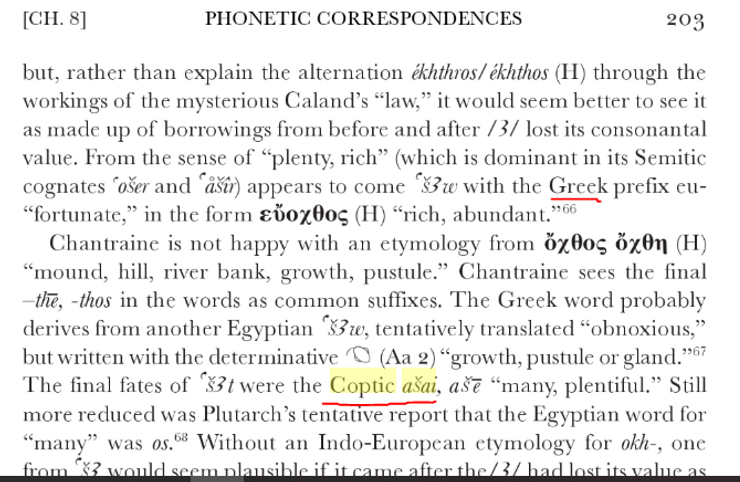
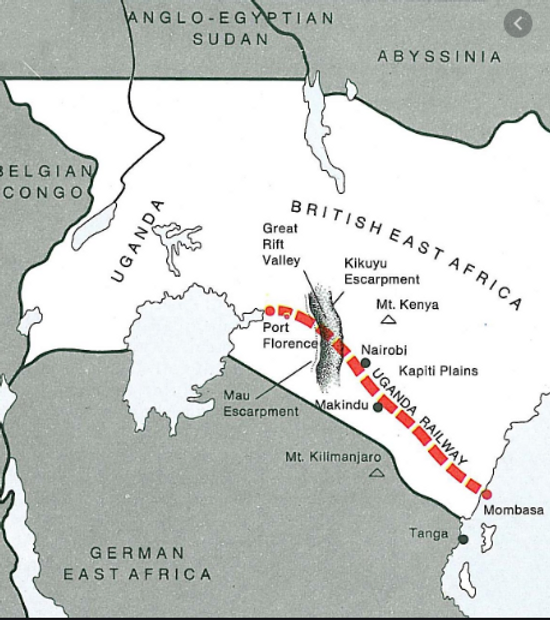
Maragoli also offered sacrifices at a tribal scale, and during this important day everyone was required to refrain from doing any activity whatsoever for the whole day, like Beta Israel, Busa(Beer) was used by the high priest for rituals, Logoli men just like Beta Israel wore Brass/Golden earrings! And just like Beta Israel in Ethiopia, during the pilgrimage to luyah-stone at Maragoli Hills, everyone had to wash clean several times before going up to the Oluyah stone for prayers and making sacrifices, there is a water reservoir right before the Luyah shrine of Maragoli hills that never dries up without inlet, it’s said that at Rusinga they used to do the same ritual, wash up several times. The word “Ru-singa” means “a place for a bath” These are Maragoli words that still exist in Rusinga Island and Northern Sudan, “Oluyah’ stone of Maragoli is the same as “Olah” sacrificial stone of ancient Hebrews.


Unclean women MUST not come closer to the Oluyah shrine, but they can dance (Kukelemana) and make noises a few meters from the event, down the hill.
Every village-man and husband was required to keep three special triangular stones outside his hut and a special pot for boiling his forgiveness sacrifices in his compound and these stones were also called “Luyah,” quills are sacred food among Maragoli because Musalisi the father of Maragoli taught quills meat signified end of sufferings, so every sacrifices must end by sharing quills meat that is burnt or roasted without salt(Munyu/Mugoshe/Lukoshe), also every burnt meat, burnt banana must be eaten without salt, if the sacrifices are made for transgression, the sinner or the higher priest twist the neck and the whole chicken is burnt to ashes, if it’s just offering sacrifices for other reasons like war, the two priests must select a white he-goat or a white-cattle with one uniform color not a mixed cows, then they will do certain things and the animal will collapse on its own, again if the sacrifices are made for transgression, the neck must be twisted to pass sin/transgression from the sinner and consequences which was supposed to be a death penalty to the sacrificed animal, but for other reasons like burials ritual, circumcisions, demonic attacks, removing curses, barren couples, cheating, incest, or infertility of land then the cow is slaughtered very instantly after its collapse and its blood sprinkled on the Luyah stone.

Although we may find significant variations and unchristian customs compared to how Western religions are accepted by everyone today, it’s very sensible to research the origin of these traditions among Africans.
We know churches from Europe judged and condemned Maragoli and even other Africans without ever investigating the origin of their rituals, traditions, and cultures. example 99% of Maragoli’s traditions are a match to what Beta Israel do in Ethiopia, word to word, rules, laws, and customs but Beta-Israel culture is treated as Jewish but Maragoli as Witchcraft. it’s very weird how the Nondi clan still call their special sacrificial stone “Oluyah” similar to the Hebrew word for the same stone that Moses of the Bible called it same word, it’s also peculiar how Maragoli’s successfully managed to maintain all these sets of traditions for over many years without books for references or neighboring tribes to copy or borrow these traditions from them, that’s not all, God that spoke to Moses called himself “Ehyeh Aser Ehyeh” and any average Luhya of sound mind knows this means “Ehyeh Ashiri Ehyeh” which translate to “I’m still I’m” in all Luhya languages, then add “Kitav Ivri” which means “book of two” the covenant.
Colonialists rudely deemed Sub-Saharan Africans as being evil and pagans, this perception was a tool of oppression to further condemn Black races and consent enslavement and modern cabal ruler-ship of Bantu’s, but the whole idea was about stealing off African resources and if possible consent killings of Bantu’s that is going on.
This whole undermining of Bantu religions was first invented by Romans Vatican edict of 1492 which classified Bantus as an evil and cursed descendant of Canaan, but comparing Maragoli to most universal cultures, even our closet non-Bantu’s around Great Lakes or say India and even Ethiopians one must realize Maragoli’s were monotheistic and taught non-harmful religious laws(Migiru) throughout history and some of the greatest teaching attributed to Murogoli himself was stopping the practices of FGM, stopping drinking of raw blood(Maasai) and stopping of Incest marriages. Most people won’t know this but Maragoli are among the few Kenyan tribes that never entertained FGM, the FGM tradition itself and its initiation were so prevalent that young girls died during or after the initiation processes. Murogoli was also a teacher of “taboos” and “Clannism” he taught people not to marry their own cousins, warned about incest sex that caused a lot of bone defects, knocked knees, Hunchbacks, sunken eyes, conical rear-head skeleton(Occipital), rearrangements of teeth and pale skin babies.
Maragoli never had kings or Chiefs of their own but a pair of priests who supervised all headmen/village men, The British government disrespected our culture and changed all these. The first ever chief of Maragoli was called Chief Paul Agoi who was installed by the British Government in 1940, Agoi like my grandfather and half of our grandfathers from Vihiga were forced British military conscripts who fought alongside men from Kamba(Martial arts) and Sukuma conscripts but never got paid anything for their service and some vanished to this day while others developed cancers and PSTDs.
King Nabongo Mumia of the Kavirondo Kingdom never ruled Maragoli and Tiriki or imposed his jurisdictional powerful chiefs on Maragoli and Tiriki, actually King Mumia learned about Maragoli between the 1890s-1921, this was during the Masana War of Luo’s vs Maragoli over Kisumu-Masana land evictions, when British government through the then Nyanza British colonial District Commissioner MR Hemment, sir Charles Hobley, sir Eliot, sir Thompson and British local Colonial paramount chief of Luo’s Petero Obiero, physically evicted Maragoli’s from Kisumu and rendered Maragoli land-less by pushing Maragoli’s northwards to create room for a new rebranded “Britsh-Kisumu-city” and British free sugarcane, tea, rice, and cotton farming scheme. Mark-you, Maragoli’s population was two times the size of Luo’s, but irregardless Maragoli’s were left in a very tightly congested area with no more land to expand or farm on, Its Nilotic-Nyang’ori, Nilotic-Nandi’s, Bukusu’s, Itakho and other Luhya’s who welcomed in Maragoli by offering them place to settle in, others went to Kigumba scheme in Uganda, others were taken to Lugari, Soi, Danger-Kapsabet, Turbo, Shamakhokho, Ireho just to try and decongest Vihiga from what was like an IDP camp.
However, this whole thing was done to erase the history of Maragoli from the entire Nyanza region and soon I will explain this in detail, but for now the word “Nyanza” is a Maragoli origin that means “ Love or a big mass of water.” Another one was “ Akusuma” which the Queen of England through her relative; King Leopald’s of Belgium and his left-hand man, Sir Stanley Henry Morton(solder) switched to modern “Kisumu,” but first they tried to call it “Port Florence,” wife of the engineer, but the word was too long and rigid to stick or be pronounced by Luo’s, so they settled on changing “Aksuma” to “Kisumu.” This renaming of Nyanza closed the chapter and discoveries made by the late Sir John Hanning Speke, Sir John Speke was the first British military spy(East Indies regiment) to discover the origin of the Nile River and “Amara-Koli “Christian” people,” according to Speke book, the Amara people had named most parts of Great Lakes including River Kagera and Indeve(Entebe) a famous barter trading Market called a “seat.”
Sir John Speke died mysteriously when he was to defend his discovery about Amara-Koli found at the source of the Nile River near “Baharingo River,” Speke made the terrible mistake of disclosing his finding directly to the Queen instead of Sir Burton, Sir Speke was related to the Royal family but his finding angered the royal family, especially when he told everyone that; “Black Amara who wears brass earrings were known as Christians/Jews” by Arabs of Malinde(Malindi) and all neighboring communities of the Great Lakes, he also told British Royal Geography society that Amara-Koli are found immediately at the beginning of Nile, something that really enraged the Queen of England and the head spy of East Indies military operation Sir Richard Burton, the two were later on forced to do a second trip because the two couldn’t agree on the source of Nile and who exactly was Amara.
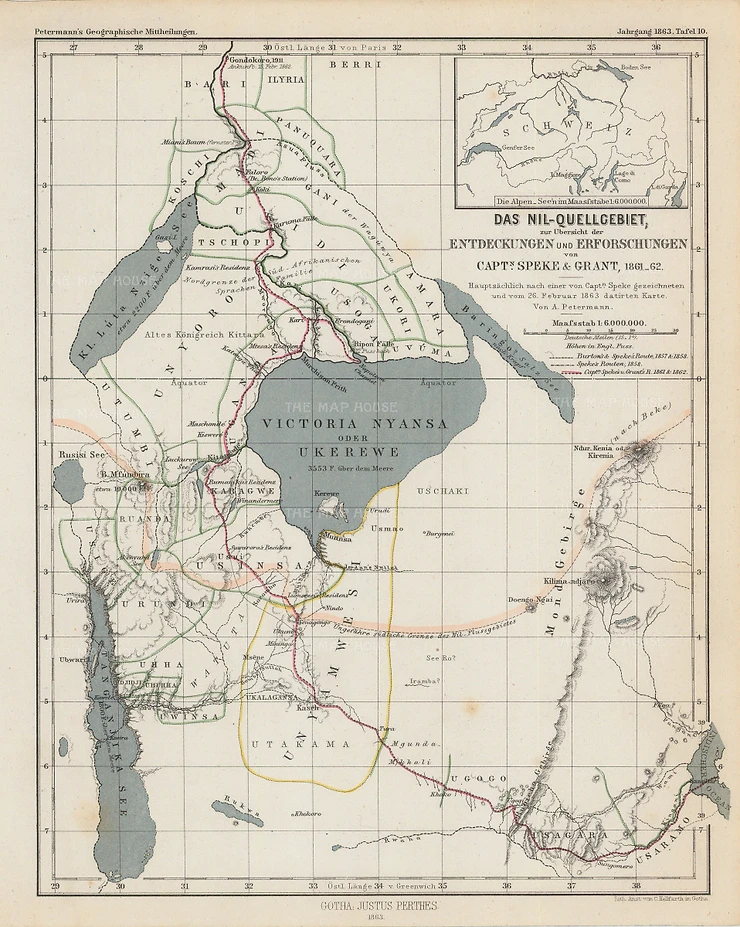
After the Mysterious death of Speke, Sir Morton redrew the map of Speke and changed the position of the Equator, afterwards the new maps had Amara-Koli disappeared or pushed further north from Speke’s Prior position on the map. The ‘East-Indies’ military mission was started when Ethiopians went to Rome(1300-1400) to request the office of the Vatican to save PRESTER ESKENDER(Priest Shikanda) who was escaping from Aksum via the Nile River from the Turks slave hunters, these requests landed in the wrong ears(Germans) and they quickly hired Portuguese sailors to find them, but for hundreds of years they couldn’t, several ships failed to go around Good-Hope South Africa until Vasco Da Gama succeeded.

John Speke was the first European to find the source of Nile and confirm about priests he saw in Nyanza, but their color ‘BLACK NEGRO‘ and not ARYAN with English nose angered the queen of England because the Royal family commissioned and chaired Jewish body; “jüdische Typus” that they claimed ancestry from King Shikanda and Sholomo(King Solomon) through this same body that Royal family financed to search for Aryan Jews of the world.
TOTEM
Different sub-clans of Maragoli have different totems, but long before Europeans arrived, Maragoli priests nurtured Leopards while others still have monkeys as our totems, while women from Nondi the priestly clan observe puff adder(Irihiri) as a totem for fertility. Irihiri is one of many other things that the Quakers Church used to indict and pin down Maragoli as being pagans, to this day this perception has wrecked the unity and reputation of Maragoli society, Countless people have failed to answer the unclear question of how and where Maragoli got this weird culture of a totemic Puff Adder?, Professor Stanley Egara Kabaji of Masinde Muliro, has been trying to respond to numerous letters and books written by various churches, bishops from Mt Kenyan region and Luo-Nyanza Bishops and clansmen, criticizing and condemning Nondi Priest of Paganism. Maragoli themselves surrendered this war and accepted to be accused of all sorts of condemnations without doing their research to rebuttal these malevolent accusations.
I may not know the full origin of Irihiri, but what I certainly know it came from Saudi Arabia and was a culture of the Hebrews and Moabites captured in Biblical Manuscripts, Egyptian Papyri, Egyptian books like Book of the Dead and Jewish-Talmudic, Moorish culture in Andalusia, Arabs charmers in Morocco and Tunisia.
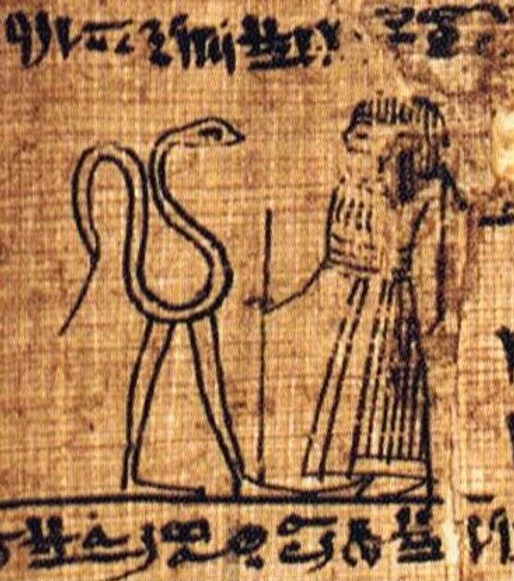
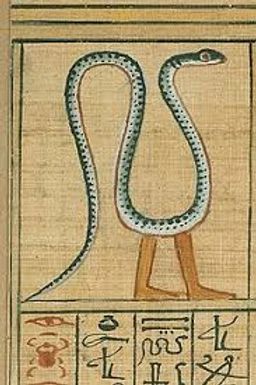
The Nondi priest stay in a completely distressed environment and carry their religious activities secretly and in concealment, so they may not be charged by the church or by the government with witchcraft. However what people fail to realize is that if Nondis give up on their ancient ceremonies and teachings, then the Roman-Vatican will be triumphant! Because this is an ancient battle, the Bantus are distracted from investigating their powerful roots and cultures, this fight started long ago and took center stage in Portugal, Numidia, and Spain at a place called “ANDULUSIA” and the main cities were Grenada, Alhambra, Cordoba-Marchena-Ragol. one has to dig dip and dipper to understand these words are Luhya and Majority “Maragoli.’

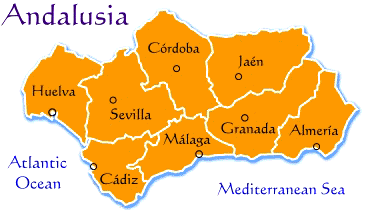
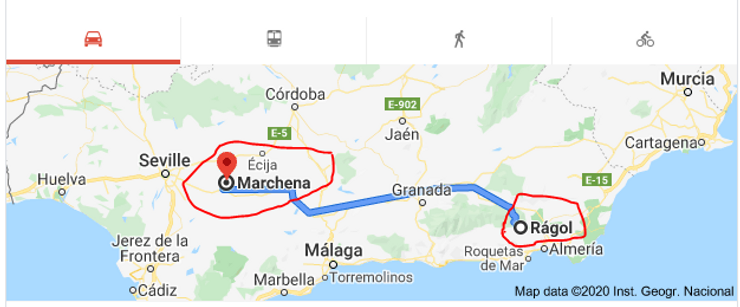
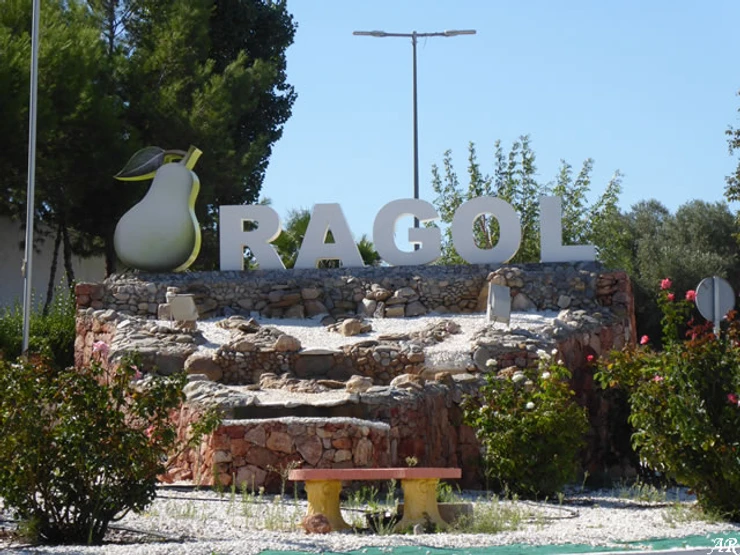
DNA of Valle Da Gafaria Portugal is a big puzzle for Europeans, because almost all of the DNA test done on the fossils, not only did they prove Bantu ancestry, but matched perfectly with that of Luhya, and to prove that these bones were not of slaves, all of them had filed teeth(Character of Luhya), earrings and bracelets and they were buried next to Germans walled quarters in Portugal. That’s not all, few meters from these discarded bodies, they found piled-up bones of cows that signified these people used to offer animal sacrifices before they were killed and buried unceremoniously.
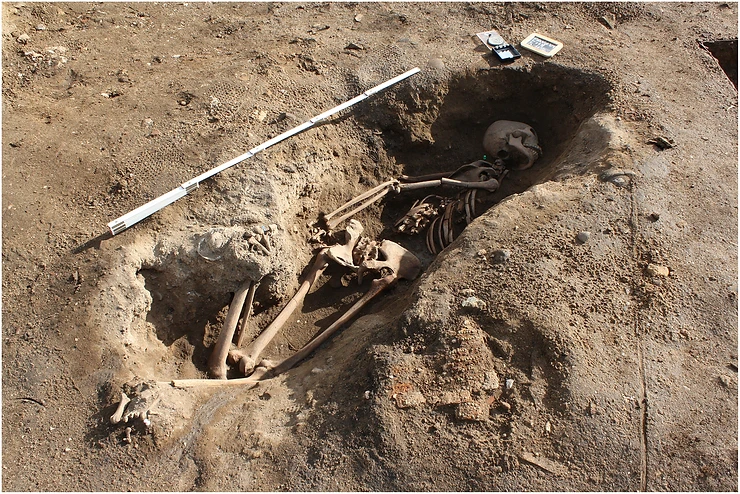
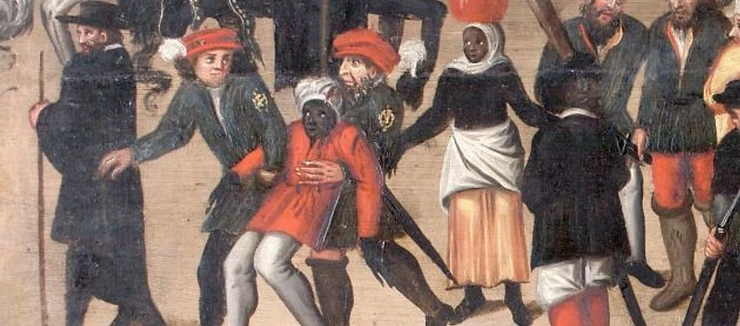

Examples;
1. Andalusia is derived from ‘Avanduluswa’ which is the original name for Vandals, and Vandals are Germans, the exact word exists in Maragoli’s ‘Avandulswa’ with the exact meaning and character of Germans in Medieval Europe.
2. Visigoth is derived from “Avisigo” which is also Maragoli and it means ‘enemies’ and visigoth was a sub-tribe of Germans.
3. Scythian is from Vasinzi and any Luhya can interpret that, plus double check by their research what Scythians did or were known for, it is shocking!
4. Cordova means on soil(Marova/Kurlova).
5. Even Babylon is derived from Maragoli’s and Luhya’s “Babilu, Vavira or Vavilu” which means witches, that’s not all, “Moloch” is also from Maragoli’s “Mulochi.”
Some words have Arabic “Al” in-front but if you double check the second word its etymology and root, its 100% Maragoli, For example “Al-Hambra” and Hambra in Ragoli means “Maybe.”
The Ummayad originally lived (in Mecca) and (Shirazi) East -Iran but opposed the new religion preached by the Prophet.
With the subsequent conquests of Islam and the foundation of an Islamic empire stretching from South Arabia to Southern France and Shirazi-East Iran (a situation that offered opportunities for power and wealth to the family of the Prophet), the Ummayyads gave up their opposition, establishing themselves as caliphs first in Damascus and later in Cordova. Their conversion to Islam seems to have been more political than religious—they never capitulated to the ascetic ethic of the Moslem creed—and their worldliness was reflected in the opulence of their royal courts.
Among those who had facilitated the Arab conquest of Spain were the Black Jews. Increasingly oppressed by the Vandals and Visigoth rulers of the Hispanic peninsula, the Jewish population had welcomed the Black Arabs as liberators. In turn, the Arabs extended marked toleration to their Jewish subjects, finding them not only loyal but also useful as interpreters of European ideas.
Eventually, Jews came to be employed in the highest offices of the state and got some form of freedom under the Ummayad. In the 10th century, for example, a converted Jew ibn Shaprut was the principal statesman at the court of the Umayyad. In Jewish history, he is especially remembered for his negotiations with the Khazar czardom between the lower Volga and the Black and Caspian Seas, where a whole nation had been newly converted to Judaism. This conversion of an entire kingdom was welcomed by the original Jews as a divine confirmation of their hopes in spreading their religion and must certainly have stimulated their return to a more active role in history as this is when they matched to Russia to spread their Religion.
The name “Marchena” in Luyah means “Stones” from “Amachina” and this Marchena area was an agricultural village that was once occupied by Black Jews(Maurisco),’ the modern warfare between Bantu and Vatican started long before the Inquisition period, but slavery of Bantu itself started when Pope Nicholas V of the Roman Catholic, during the fall of Byzantium, issued papal edicts or bulls in 1452 and 1455 and declared Bantu as “cursed born-slaves” therefore they can be enslaved and deprived of the right to own land if they don’t comply by accepting Christianity and pay USURY(sin)! and the first city where Jews of Europe felt the tough hand of the Vatican was called and still called “Ragol” as this is the exact location where the Sacrifices(mass) and religion of Black Jews were stopped forever. In 2012 researchers excavated a burial archaeological cemetery in Valle da Gafaria, Lagos, Portugal, and they found piled-up bones of unceremonious burials that date back to 1400(Inquisition period), DNA matched that of Luhya’s and the population of Afro-Brazil(VERY IMPORTANT).
These should be a starting point for every Maragoli and Luhya’s in general who is eager to learn, they can also uncover the full history by researching when Libya was called “Lonya” by the original Hebrews, when Khutanya was the real name for Asia Minor, Khesari for Turkey, Suba for Palestine and Lemba village in Greece, Alexandria-Egypt was called Shikanda but Greeks renamed it to hide everything!! These are excellent starting points to connect the dots.
So, in Europe there were Bantu and there is no doubt about that, also the Ummayad caliphate were Black Arabs related to Shirazi Arabs and Prophet Mohamed himself, the Abbasids were Turkic Arabs who created the Moslem religion and the main agenda was to enslave Bantu, so the two caliphate fought each other, its Abbasid that captured “Zanj” and took them to Basra Iraq to work like beast, its them that destroyed Egypt and Ethiopia by repainting and knocking off noses of Egyptian’s sculptures, although France(Napoleon era did the rest) Will deal with that on another day. So if you check Kilwa Ruins in Mombasa down to Tanzania, it is the same architecture as the one built in Andalusia, that was because Shirazi Arabs were the ancient Royal crest that joined Black Jews in Andalusia and worked together to stop Vandals from ever again taking over north Africa.
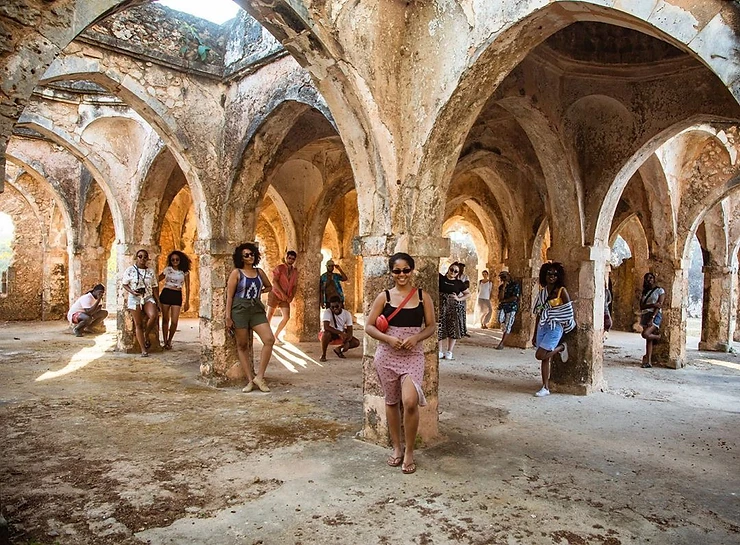
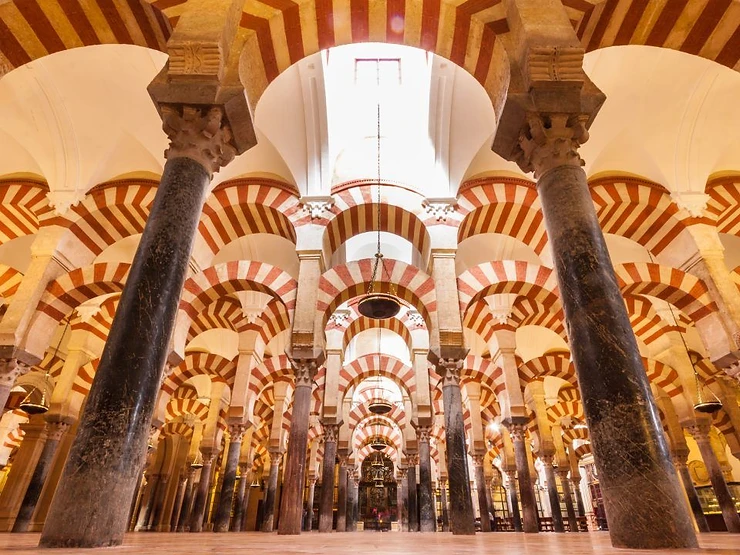
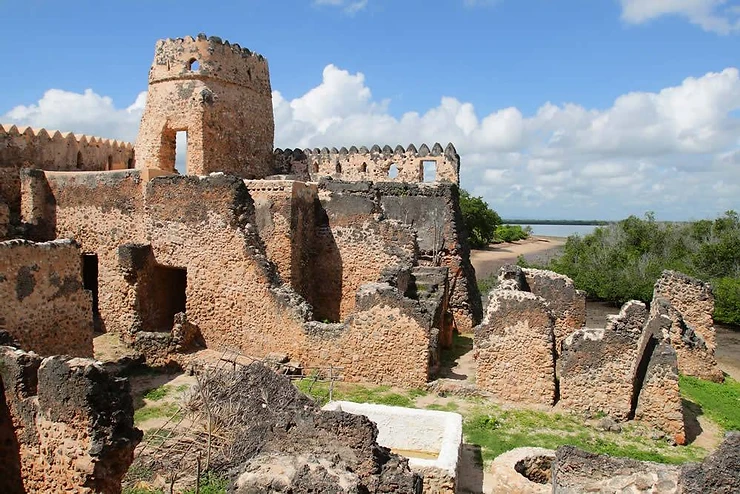

Back to the snake, we know the first five books of the Bible were written by Moses himself, and he was inspired and instructed to do so by God Yahweh(Ehyeh) himself, so Moses(Musa) wrote the following words in the book of Genesis; King James Bible Genesis 49:17 “Dan shall be a serpent by the way, an “adder” in the path, that biteth the horse heels so that his rider shall fall backward.” Here clearly, the Bible calls the tribe of Dan “puff adder.” from this description, we know all the twelve tribes of Israel had flags, Totems, banners, and a signpost for different clans and tribes, for example: “Lion” for Judah and Bull for Ephraim.
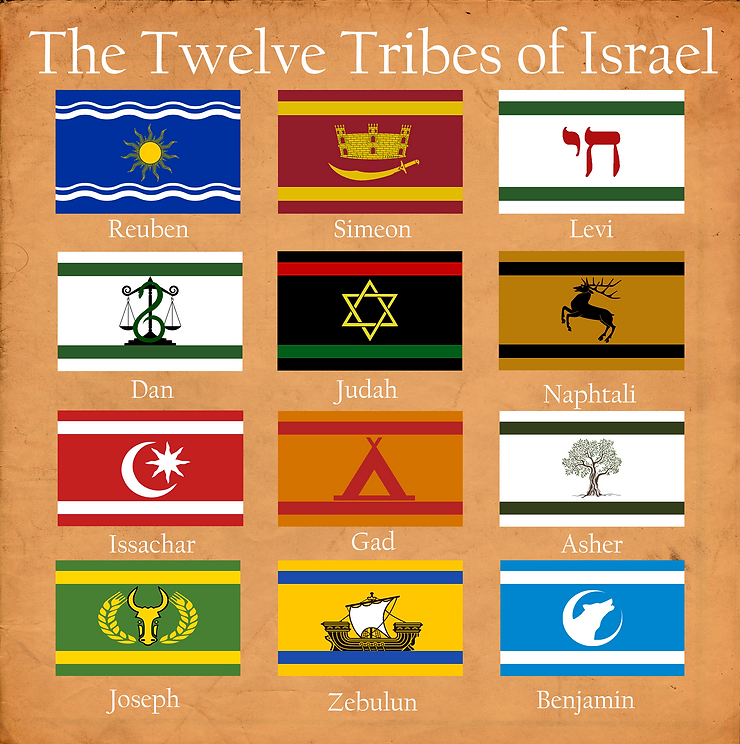
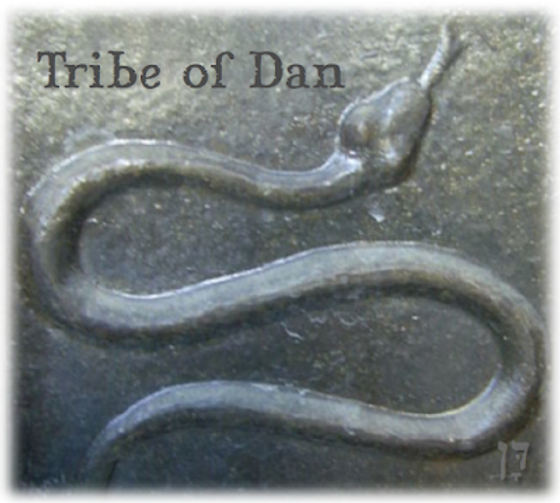
My emphasis will be on the tribe of Dan and sometimes Levites who also had Puff adders for MEDICAL healing and SPIRITUAL miracles. Biblically we know it was Puff Adder the bronze/Copper colored snake stature on the cross that healed Israelites(Number 21:9) and we know in 2Kings 18:4 that the Israelites continued to worship Neheshtan/Asherah healing pole of Moses for many years instead of God Yahweh because Levites had snake as their totem, it was the same snake that swallowed the Egyptian’s snakes and we can tell these because Yahweh instructed Musa to hold this snake by the tail and it turned back to a rod. meaning earlier, his rod had turned into a poisonous serpent, therefore if he’d picked it up by the head, it would have bitten him up (Exodus 4:4, Exodus 7:12).
It’s the tribe of Dan that gave birth to a famous war warrior called “Samson” and he was ordered by The Most High to maintain Rasta!(Nazarene style), to this day we know warriors and sometimes leaders among Maragoli are required to keep dreadlocks a thing that the Quaker church proscribed.

Back to Irihiri, the Maragoli word “Irihiri” is derived from the hissing sound (ri-ri-ri-ri) and compared to Hebrew word “Tziphoni” which means hissing is the modern word for Puff adder in Hebrew. Today we clearly know that the tribe of Dan together with four other tribes fled to Axum Ethiopia alongside the last cousin of King David Known as King “Shikanda” which the Romans and Portuguese called “PRESTER JOHN” (Eskender by Ethiopians) and he established a formidable Kingdom in Sudan and Axum including “Gonda” and “Uganda” which are all derived from his name “Shi-Kanda.”
Further south, it is verified that the founders of Gondokora market, Aswan Market, and then Kitara/Banyoro kingdom were priestly clans, they offered bull sacrifices on sacred stones(Ntusi hill), and their sacrifices were done on a specially made stones which are more or less similar to Maragoli’s Oluhya/Luyah stone and they buried their dead with pots on the head or legs.

Another thing that was very significant in ancient Kitara was “snakes,” yes!! the lost Bachwezi priest clans are still regarded by Tutsi as snake people(Aliens), this is because the original priest clans that found Bachwezi dynasties were known for keeping royal and sacred snakes. The priests themselves kept snakes as Totem of (rebirth), these sacred snakes were also attributed to fierce fight without being detected by “smell” and then guardians of fertility for women, but outsiders saw these snakes as the source of power and divinity within Bachwezi priests.
Like Maragoli the Chwezi priests worked in pairs, one as the lesser priest and the other as the senior priest, long before Babito-Luo arrived, Chwezi priests healed people from as far as Eastern Congo and far East in India, Indian government still have prehistoric materials in their archives recording their locals being ferried to East Africa and be healed by Amara priest found at the beginning of Nile(India still call Lake Victoria “Amara” a name for those priests). The Chwezi priests prophesied major events and healed people!
Another point on Irihiri, and this is very very significant If the fathers of all Maragoli migrated from Congo or Nigeria as per Bleek and Seligman’s theories on Bantu Migration, then possibly they would have brought with them a different kind of snake, perhaps a rain-forest one like a Mamba since there are no puff adders in Congo, Puff Adders are only found in hot savanna, areas between Southern Africa through Kenya to Morocco, eastwards to Ethiopia-Yemen and a large presence in Saudi Arabia. The other important finding is the connection between the totem of Barotse(a branch of Lozi people who migrated from Zimbabwe to Zambia), the Lozi have Puff Adder as their totem! then westwards we have the Harero tribe who also have a puff adder as their totem, strangely!! all these three Communities have a past and present history with dhows and boats! Barotse are known for the “Kwambuka‘ event, which is a special kind of “seafaring,” maritime or crossing sea with dhows! Harero also trace their migration from somewhere around the Great Lakes where they left hurriedly by dhows after they were attacked by new tribes from North! the word “Kwambuka” means Crossing sea in Maragoli and together with “Omtwi” has been a persistent point of wrangling between Maragoli and fellow Luhya, the same word “Kwamboka” exists among Kisii as a feminine name.
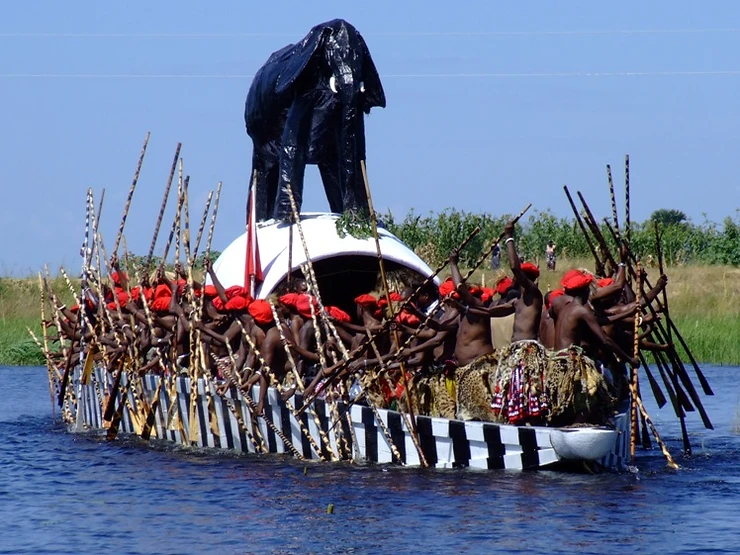
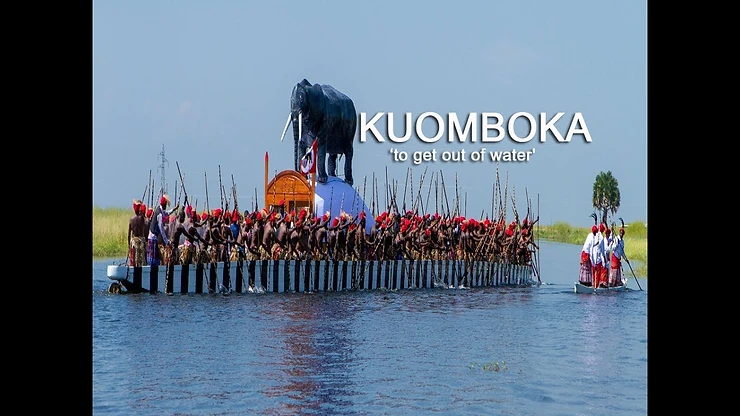
According to Maragoli’s immigrational tradition from Rusinga, as was written by Wagner Gunter titled; “Bantu of North Kavirondo” he wrote that during colonial land tax commission, Maragoli’s told the commission that they came from Shirati in their own built Dhows, and were running away from Luo’s militia in the Rusinga islands of Lake Nyanza, they told him several of our clans got lost and vanished because of strong tides that drifted several dhows southwards from Winum Gulf while Maragoli’s powered on and settled at Masana.
This is where it gets extremely interesting, because we know the tribe of Dan in the Bible was known as artistic seafaring and in a series of commercial trade dealings through maritime! In Zambia, Lozi people still make marvelous Dhows and cross rivers from one end to another in a remarkable scenery called;(Kwambuka), according to Jumba the forefathers of Maragoli history, Maragoli’s left their dhows in Rusinga and others in Buganda!! Lozi or Barotse originally were known as “Luyana” and worshipped God “Nyambe” which sounds very closer to Maragoli’s “Nyasaye” and “Zambe.’
We know most of the Christian Bible translations came from the Coptic Greeks, who first translated Meroitic manuscripts found in Alexandria, Ethiopia, and Sudan! The evidence is found on the holy crosier of the Coptic church, by two-headed serpents on their walking stick (Crosier of Bishop). it is believed they copied it from the stick of Moses. Also, the Copts translators of Northern Sudan and Ethiopia gave birth to the names like “Nubia,” “Dongola” and “Makuria”
In the Greco-Roman conquest of Israel and then finally in Sudan-Ethiopia, their translation gave birth to the word “ Makuria” which was equivalent to “Lord” in Greek, and Kurios in Roman which they changed to Kristo=kupios, so in reality “Makurian” means “Christians” from Kyrios=kurios (Christos) and that’s why they say “Christians of Dangola were Makuria”. That’s not all, in the ancient world(Before 1200 up to the Roman Catholic inquisition of 1492) there was no group of people known as “Hebrews,” that word only existed in ancient Egypt as “Habiru” which Cushitic-Tutsi still use to refer to any Bantu’s whom they regard as their servants, but the original word was “Amara,” therefore, the ancient people of Zion will be designated as “Amara-Zion,’”
Then “ Ragol’ meant priest, Ragol is the Aramaic translation of Hebrew “Gober” and in Assyrian “Nirgal,” then in Gee’z and Armenian it will be “Negus” and Niger/Necro in English and then “Swarthy” in Germanic translation, the word “Swartz” is what Hima-Tutsi’s picked up from German archaeologists in Bunyoro-Kitara to designate the lost and defeated priests of Kitara as “Chwezi” it’s a mistranslation from the Germanic word “Swartz.” However, in the ancient world, the word “Nirgal” defined powerful/spiritual/Kings of Amara origin, and “Ragol” as “Priestly or prophetic orders.,” the Kuhan.
Leave a Reply
Translate »
